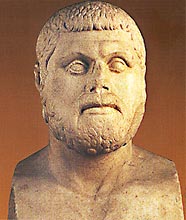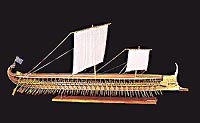 |
Generals in the 5thcentury B.C., such as Themistocles, Aristides, Cimon, Pericles, Cleon, Nicias and Alcibiades had to combine military and political skills. During the 4thcentury B.C., with the decline of Athenian military and naval power, the office of General ceased to be a path to political influence. However, at the same time, a breed of distinctly military Generals started to emerge. Examples include Iphicrates, Timotheus, Chares and Chabrias, and for that reason their functions started to separate off (Aristotle, The Athenian Constitution 61). With this separation of the political and the military, Athenian political life started to assume a new character, one which would come to establish itself in the second half of the 4thcentury B.C. |





